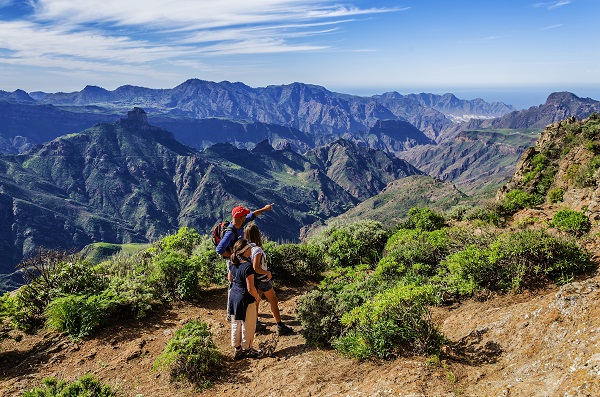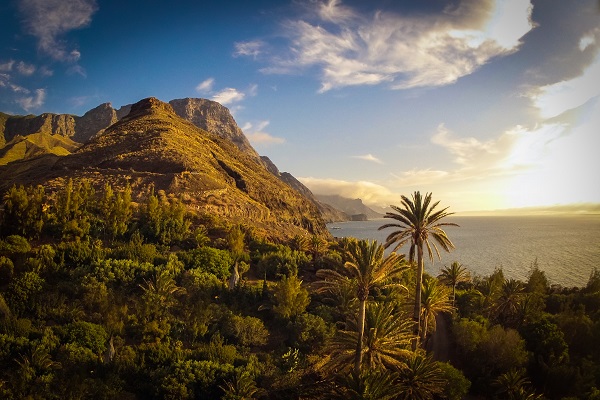Cycling in Gran Canaria is very popular and there are plenty of great cycling routes, from north to south, around the coast and in the mountains where there are many arduous climbs and steep descents to keep the real cycling enthusiasts happy.
The island of Gran Canaria is round in shape and rises up from the sea like a 'massif'. In the mountains at the centre of the island lies Roque Nublo or Cloud Rock. This rock, which is 80m tall, is one of the largest free-standing rocks in the world.
The clouds often descend on Roque Nublo but it's still well worth a visit as it can reappear every so often.
 |
At 1813m, Roque Nublo is one of the highest points on the island. The highest point is just to the east - Pico de las Nieves - which is 1956m high.
You can walk up to Roque Nublo from Tejeda village or across the top from San Bartolome or Cruz de Tejeda. The routes are well signposted but make sure to bring plenty of water as there are very few shops on route.
Another of island`s main attractions is the immense, deep crater (Caldera de Tejeda) that dominates the centre of the island, providing a drainage network of rainwater which in turn runs down the ravines towards the coastal areas.
The altitude of the island and the complexity of its shape have made it possible for many different micro-climates to exist. Hikers and walkers will also be enthralled not just by the variety of landscapes but also the huge range of flora and fauna, much of this is unique to Gran Canaria. Indeed, one-third of the island is a World Biosphere Reserve.
 |
The most preserved areas are in the southwest of Gran Canaria where the very best pine forests in the Canaries may be found. The Canarian pine is an endemic tree as is the Canary Island lizard, which is very abundant and endemic to the island. Endemic birds include the great spotted woodpecker, robins and the blue chaffinch.
Call us now on (01) 8047100 or see our Gran Canaria Offers here